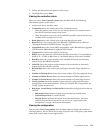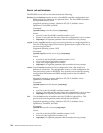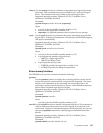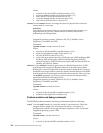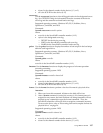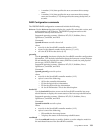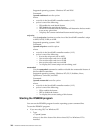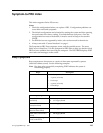Using IBM ServeRAID 139
— A number (1–16) that specifies the new concurrent drive startup
count
— A number (1–16) that specifies the new concurrent drive startup
count and a number (3–15) that specifies the startup delay time, in
seconds.
RAID Configuration commands
The IPSSEND RAID configuration commands include the following:
drivever Use the drivever function to display the vendor ID, microcode version, and
serial number of a SCSI device. The IPSSEND program retrieves this
information directly from the device.
Supported operating systems: Windows NT, OS/2, NetWare, Linux,
OpenServer, UnixWare, and DOS
Command:
ipssend drivever controller channel sid
where:
• controller is the ServeRAID controller number (1–12)
• channel is the channel number for the device (1, 2, or 3)
• sid is the SCSI ID for the device (0–15)
getconfig
Use the getconfig function to display the ServeRAID controller configuration
information. This includes information about the firmware version; initiator
ID and rebuild rate; logical-drive status, RAID level, and size; and physical
device type, SCSI ID, and PFA error.
Supported operating systems: Windows NT, OS/2, NetWare, Linux,
OpenServer, UnixWare, and DOS
Command:
ipssend getconfig controller options
where:
• controller is the ServeRAID controller number (1–12)
• options is one of the following:
— AD for the controller information
— LD for the logical drive information
— PD for the physical device information
— AL for all information. This is the default option.
hsrebuild
Use the hsrebuild function to turn on the ServeRAID controller hot-swap
rebuild feature or display the current status of the hot-swap rebuild feature.
Supported operating systems: Windows NT, OS/2, NetWare, Linux,
OpenServer, UnixWare, and DOS
Command:
ipssend hsrebuild controller options
where:
• controller is the ServeRAID controller number (1–12)
• options is one of the following:
— ON enables the hot-swap feature
— ? displays the status of the hot-swap rebuild feature.
readahead
Use the readahead function to enable, disable, or set the adaptive mode for
the read-ahead feature of the ServeRAID controller.



